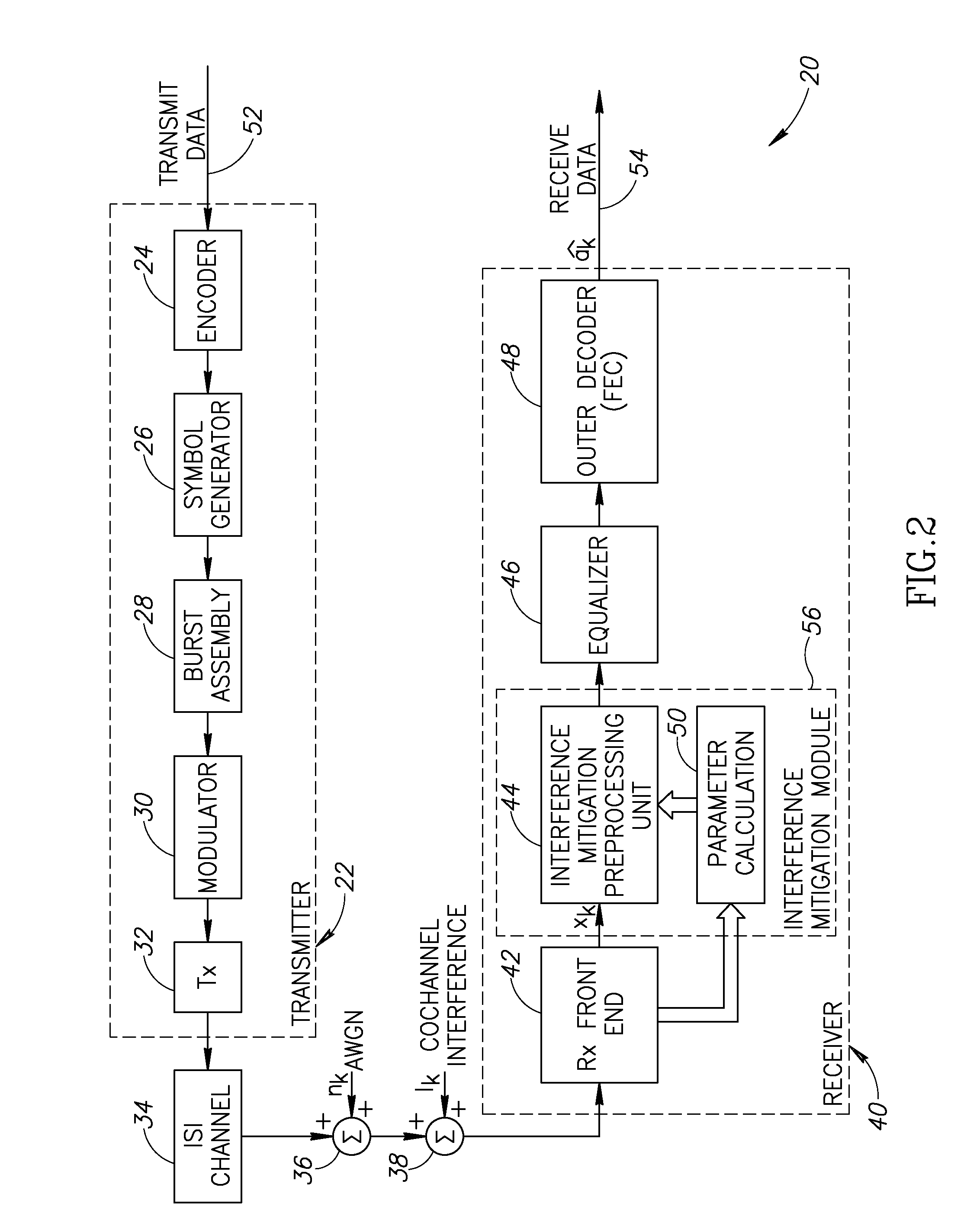Blind interference mitigation in a digital receiver
a digital receiver and blind interference technology, applied in the field of wireless communication systems, can solve the problems of increasing the level of background interference and interference due, reducing capacity, increasing the interference in cellular networks, etc., and achieves the effect of low computational complexity and high performance gain
- Summary
- Abstract
- Description
- Claims
- Application Information
AI Technical Summary
Benefits of technology
Problems solved by technology
Method used
Image
Examples
computer embodiment
[0176] In alternative embodiments, the present invention may be applicable to implementations of the invention in integrated circuits or chip sets, wired or wireless implementations, switching system products and transmission system products. For example, a computer is operative to execute software adapted to implement the interference mitigation mechanism of the present invention. A block diagram illustrating an example computer processing system adapted to perform the interference mitigation mechanism of the present invention is shown in FIG. 13. The system may be incorporated within a communications device such as a receiver or transceiver, some or all of which may be implemented in software, hardware or a combination of software and hardware.
[0177] The computer system, generally referenced 190, comprises a processor 192 which may include a digital signal processor (DSP), central processing unit (CPU), microcontroller, microprocessor, microcomputer, ASIC or FPGA core. The system...
PUM
 Login to View More
Login to View More Abstract
Description
Claims
Application Information
 Login to View More
Login to View More - R&D
- Intellectual Property
- Life Sciences
- Materials
- Tech Scout
- Unparalleled Data Quality
- Higher Quality Content
- 60% Fewer Hallucinations
Browse by: Latest US Patents, China's latest patents, Technical Efficacy Thesaurus, Application Domain, Technology Topic, Popular Technical Reports.
© 2025 PatSnap. All rights reserved.Legal|Privacy policy|Modern Slavery Act Transparency Statement|Sitemap|About US| Contact US: help@patsnap.com



